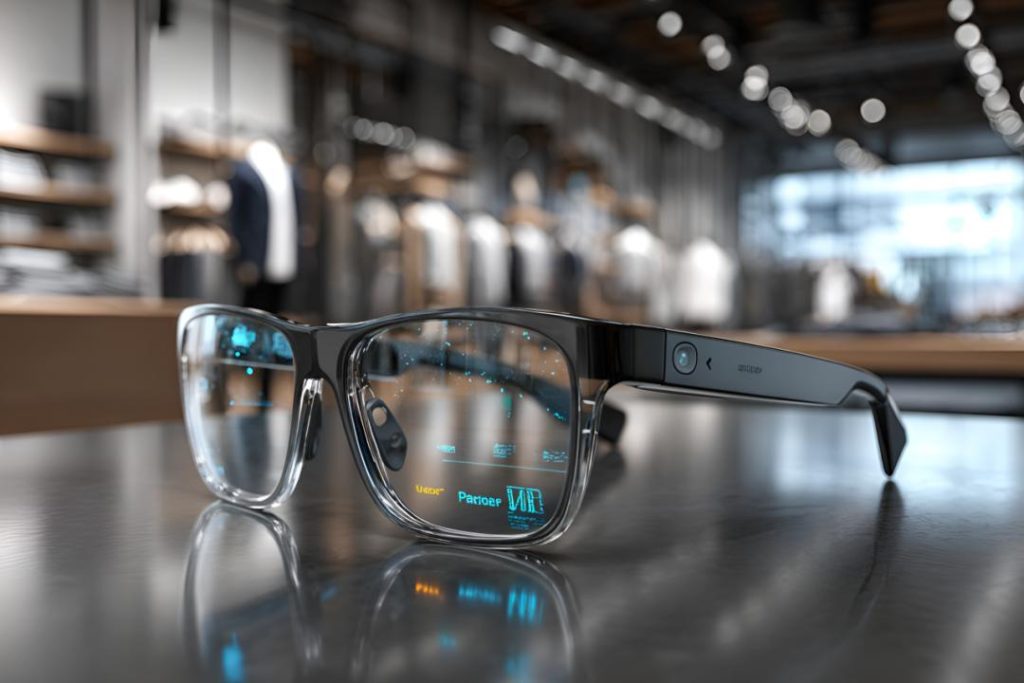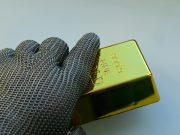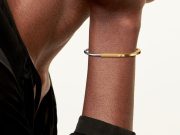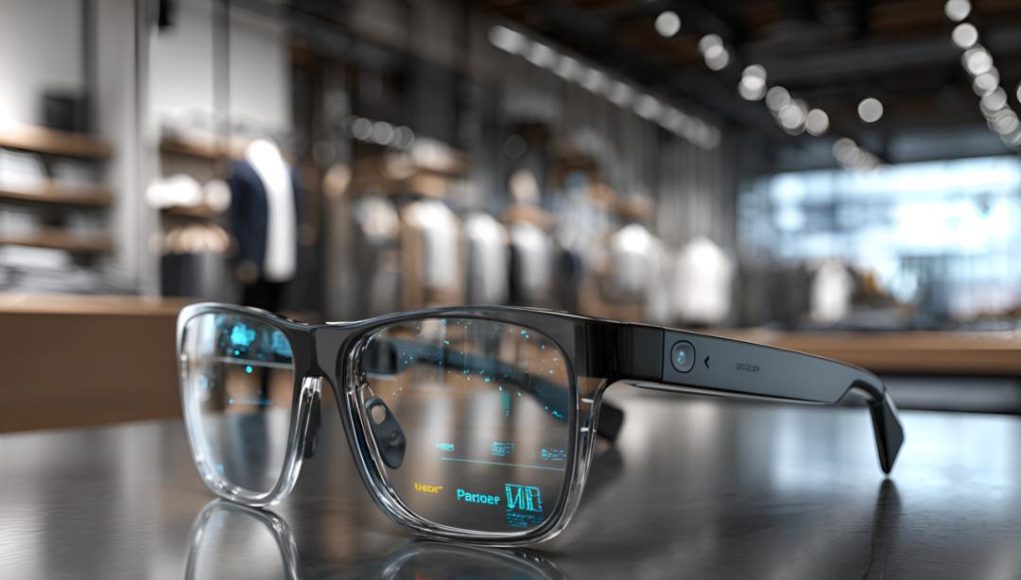(SINGAPORE, 24.11.2025) Like the world, China is in the midst of a smart-glasses (智能眼镜)frenzy. It is estimated that nearly 400 Chinese companies have rushed into the AI-glasses (人工智能眼镜)field, from internet behemoths to homegrown extended-reality (XR) innovators, reported the Chinese media.
Most AI glasses today are also called “smart” and are sometimes AR (augmented reality 扩增实境)-enabled, so these terms can overlap in marketing. The true distinction lies in whether a pair of glasses is merely smart, enriched with augmented visions, or truly infused with artificial intelligence. In China, when it comes to this latest craze, the term on everyone’s lips is AI glasses.
Baidu(百度)has just unveiled the Xiaodu(小度)AI Glasses Pro, a device that integrates AI-powered object recognition, real-time translation, and first-person perspective recording into one. Rokid(若琪)has brought its AR glasses—once confined to industrial settings—into everyday life, enabling effortless recording and intelligent interactions. Meanwhile, Xiaomi (小米)presented its Xiaomi AI Glasses, which could interact seamlessly with smart home devices.
According to US global consulting firm International Data Corporation (IDC), global shipments of smart glasses are projected to surpass 23.7 million units by 2026, with China alone accounting for over 4.9 million.

AI glasses are by no means a novelty. In 2012, Google Glass attempted to spark a wearable revolution, but it quickly faded amid privacy controversies, underwhelming functionality, and steep prices. In the decade that followed, the industry slumbered.
But starting in 2023, a set of critical shifts arrived —advances in on-device large models, a more mature supply chain, and a smartphone market moving toward saturation, reported Naojiti (脑极体), a Chinese media focusing on AI and frontier technology. The Chinese tech giants badly need a physical device that can carry AI capabilities and be used frequently — and AI glasses happen to fit the bill.
Hence, AI-glasses competition is heating up: Chinese media talk about a “hundred-glasses war” (百镜大战”), indicating many entrants into the fierce competition other than Baidu, Rokid, and Xiaomi.
But unlike previous years, this year’s AI-glasses development strategies are more focused and pragmatic. Rather than showing off technical tricks, manufacturers have turned to a simple question: What should a good pair of AI glasses actually be? Naijiti pointed out.
A good pair of AI glasses must first be wearable—coming in under 50 grams, with nose pads shaped for Asian faces, and a battery that can last a day. Then, they must be reliably good in a few key scenarios: glancing at a menu when abroad and instantly hearing the translation; having conversations automatically transcribed and summarized; or helping visually impaired users identify obstacles ahead. The more focused they are on some uses, the greater the value, Naijiti noted.
Ultimately, while performing essential functions like voice control and object recognition, the interaction should feel nearly “invisible” —no gestures, no eye-tracking, no complicated prompts. A simple ‘What’s this?’ or a glance at an object should be enough for the service to respond naturally. In other words, the glasses leverage large models with edge-cloud collaboration to deliver tangible value with minimal interaction effort.
Broadly speaking, the new Chinese players fall into three camps: internet giants armed with powerful AI models; device makers boasting mature hardware ecosystems; and firms that have honed their expertise in XR over many years, Naijiti pointed out.
Major internet giants like Baidu, ByteDance (字节跳动), and Alibaba are clearly aiming for an intelligent ecosystem. They are not fixated on producing the lightest glasses; rather, they want to turn their large language models into indispensable personal assistants.
Baidu’s Xiaodu AI Glasses, powered by its language model, can understand regional dialects and interpret vague references. Alibaba’s Quark (夸克)AI Glasses deeply integrate Alipay’s (支付宝)“Look & Pay,” Amap (高德导航)navigation, and real-time price comparisons on Taobao, leveraging Alibaba’s Tongyi Qianwen (通义千问)model and Quark AI technology.
Yet, lacking deep hardware engineering expertise, these products often fall short on finer details—quality control, mass production, and wearing comfort— compared with established hardware makers.
Take the Baidu Xiaodu AI Glasses Pro: it eschews the “AI + AR” path and lacks the screen-display features now standard in the industry. Its AI-driven features are delivered via audio and camera-based interaction. On the other hand, Alibaba’s Quark Glasses, at 42 grams, lag behind hardware-savvy rivals like Xiaomi when it comes to achieving a truly lightweight design.
The second camp is represented by hardware-ecosystem giants like Xiaomi. For them, AI glasses are not a standalone novelty but another perceptual node within a “human–car–home” ecosystem. Yet, their weakness lies in core AI capabilities. Take Xiaomi’s AI glasses, for instance—70,000 units sold in the first week, but return rates soared to 40%. Users griped that the camera was essentially a blind shooter and that the voice assistant was easily triggered by mistake.
The third camp comprises consumer-facing AR makers such as Rokid and XREAL. Yet for all their XR pedigree, these companies still grapple with fragile ecosystems and the difficulty of turning innovation into sustainable business.
Clearly, the true contest for AI glasses in China is not in the hardware or the hype, but in how seamlessly AI can be woven into the fabric of daily life. Those who first discern the most valuable use —and transform them into interactions so natural they require no learning—stand to win the devotion of the earliest users, Naijiti remarked.
As the technology evolves, AI glasses have begun to claim centre stage at international showcases like US’ Consumer Electronics Show and the global event Mobile World Congress. According to IDC, global shipments of AI glasses reached 1.487 million units in the first quarter of 2025, rising 82.3% year-on-year, while China’s market surged even more dramatically, with growth hitting 116.1%.
Yet the majority of AI glasses remain in the “novelty” stage. Retention among monthly active users for the mainstream models remains dismally low; one prominent brand, for example, saw returns soar to 40–50% merely a month after going on sale, Naijiti lamented.
Chinese consumers often grumble that, despite the steep price, the experience feels bad. Some devices rely on blinking to navigate menus, others respond to specific wake words, while still others demand that commands be relayed through a smartphone app. Even different models from the same brand may operate by entirely different logics. Such disjointed experiences not only burden users with steep learning curves but also drive developers away.
All signs point to AI glasses still needing product validation in China. What they truly require is not more flashy launches or glossy slides, but reverence for human-centred design, a patient understanding of real-world use, and an unceasing questioning of why anyone would willingly wear them every day.
It is a reminder that technical possibility does not equal practical usability, and that investor fervor does not translate into user loyalty, Naijiti advised. Looking ahead, AI glasses may face a harsh reckoning — a ruthless reshaping of the market, it concluded.





































